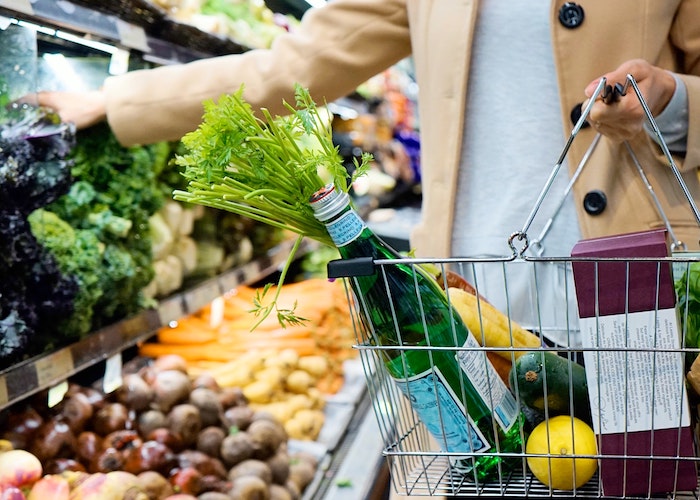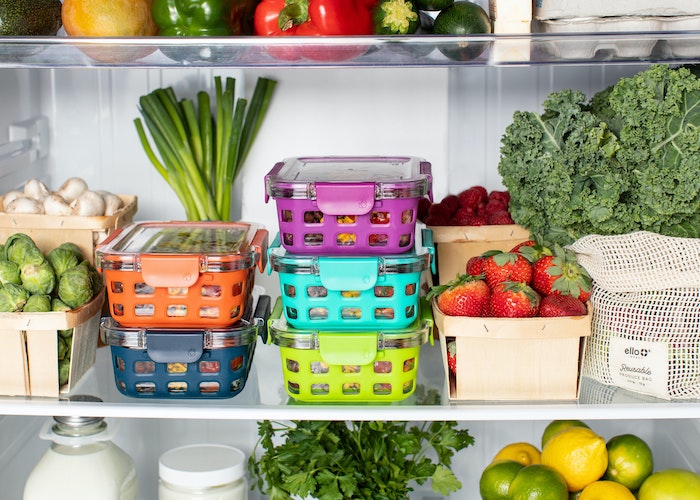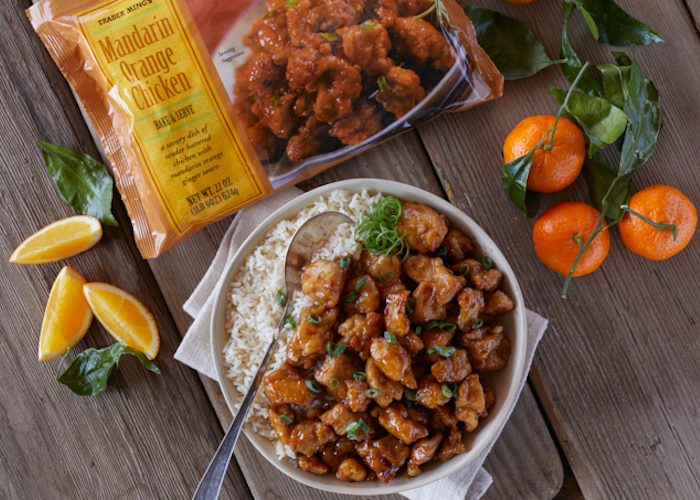8 Vegan Items That Should Never Touch Your Grocery Cart

You name a food trend, I’ve partaken in it. Unicorn toast? Done it. Elaborately layered chia puddings? Done it. Beautifully arranged avocado roses on toast? Done it (and eaten it in three bites).
I’m a big fan of cooking at home. And, having been a vegan for seven years now, I’ve gotten very good at home cooking because, well, I have to be. And I’m a huge fan of anything that makes cooking at home fun, even if it’s a bit of a novelty. I actually have no inherent issue with novelty foods. The problem is, it seems the vegan food industry is particularly full of gimmicky novelty foods and packaging them as “health” foods, essential to your survival as a vegan. Going vegan usually means you’re also entering the world of “natural” whole foods and allegedly “super” foods, whether you like it or not.
It’s easy to get taken for a ride, no matter how savvy a consumer you are. For one thing, everyone should be allowed to have fun with food, and how can you not look at that beautiful sky blue latté on Instagram and want to recreate it yourself?
And no, I’m not talking about vegan junk food here. I love vegan junk food and faux meat. Give me cow-free cookies, chickenless fingers, spaghetti and neatballs. I’m talking about those allegedly healthy alternative products you see popping up in the shelves and fridges of your local natural stores, things that are different, so they must be better, right? But here’s the thing: no one needs these foods, no matter how pretty they look. And I get it, there’s always the temptation to look at something cool and new and think, “Might as well try it.”
Here are the things you should just pass on and take someone else’s word for it.
8 Vegan Foods You Should Never Buy
1. Blue spirulina/Blue Magick/Blue matcha/anything to make your smoothie dreamy blue
As someone who adores smoothies, especially blueberry smoothies, I can totally understand just falling in love with the look of sky-blue, mermaid-inspired smoothies. And when the little powders that make them blue are marketed as having such amazing “superfood” benefits, they seem extra-worth the splurge. Here’s the thing, though: these things are crazy expensive (they start from the low-20s, but go into the high-60s), aren’t easily found in typical bricks-and-mortar stores (I live in a major city and I still rarely find them even in the hippiest of hippie shops) and for the teaspoon or so you’re supposed to use, are completely tasteless and essentially nutritionally negligible (they sometimes contain some decent vitamins and micronutrients, but in terms of macros, they’re basically dust). Food aesthetic is nice, but focus your energy on making your food look nice in other matters.
2. “Protein” peanut butter
Most protein PB blends aren’t vegan (many contain whey), but there’s an increasing amount of peanut butters with added protein that didn’t come from dairy sources. And while most beginner vegans know that nut butters are a great source of the protein, peanut butters with added protein aren’t the magical answer that you think they are. Why? Well, one tablespoon of regular peanut butter (no sugar or oil added) contains about 90 calories, seven grams of fat, three grams of carbs and four grams of protein. One brand of “high-performance” peanut butter with added seeds and “plant-based superfoods” contained essentially the exact same macros – even one less gram of protein. One other fancier brand contained only two more grams of protein, a little more fat, and about 20 more calories. Nutritionally, there’s barely a difference, but in terms of cost, they can cost two, even three times more than a standard jar of plain ol’ PB. Besides, if you want to get extra protein, there are plenty of cheap sources that’ll leave you way more satiated than a tablespoon of peanut butter.
3. Smoothie cubes
Here’s hoping this wasteful-as-hell trend doesn’t catch on. Look, smoothies are great for some, but others find them a pain in the ass – you’re either chopping more food than you like to at six in the morning, or having to do unnecessary prep before you go to bed. But if that’s really super miserable to you, I’d honestly recommend finding a different breakfast of choice than buying a pack of pre-blended “smoothie cubes.” These smoothie cubes come in way too much packaging, and nutritionally they have little to offer (one emerging Canadian brand advertises six measly grams of protein… per wheel of eight smoothie cubes). More importantly, the best thing about smoothies is how customizable they are to your needs. If you make your own smoothies and want to add a bit of extra fat for the day, you can toss in some avocado. Need more protein? Add some oats. If food prep really distresses you, you can try making your own smoothie cubes using jumbo silicone ice cube trays, which can allow you to use up all those pesky veggies in your kitchen. And if it seriously distresses you… perhaps consider oatmeal.
4. “Superfood” powders and blends
Superfoods don’t exist. “Superfood” is a marketing term. We’ve known this for years, and yet the “superfood” claim is working. Besides the label getting slapped on random produce items every few weeks, superfoods are increasingly being sold as powders to mix into your smoothies, yogurt, chia puddings, lattes and more. Things like pitaya powder, “butterfly pea powder,” chocolate mushroom blends and more are getting peddled as the newest “it” food. The hilarious thing? Besides being “rich in antioxidants” and high in fiber (to which I say, drink some green tea and eat some romaine), these powders are nutritionally benign. Some contain protein, but not nearly as much as a standard protein powder, which you’d pay about the same amount for. Save yourself the $20 and just eat fruits and vegetables (including mushrooms, which believe it or not taste way better without any chocolate involvement).
5. The gluten-free version of something that’s already vegan and junky (unless you actually can’t eat gluten)
Here are facts that we all know by now: First, people avoid gluten for a multitude of reasons, ranging from serious autoimmune disorders like celiac to preventative, doctor-prescribed diets (like low-FODMAP elimination diets for conditions such as colitis and Crohn’s). Two, gluten-free does not necessarily imply “healthy” (which is great, because celiac people need junk food too). Three, vegan and gluten-free aren’t the same thing. And four, because of the relatively low cost of wheat flour, gluten-free novelties are often more expensive than even their same-brand, gluten-laden counterparts. So why, if you’re not required by a physician to avoid gluten, would you pay up to a dollar more per package of an already-vegan product – like pizza dough, faux “cookie dough” or sugary cereal – when it isn’t healthy to begin with? If you want to eat junk food, hey, that’s your right. But if you don’t medically need to get the gluten-free version, you’re not helping your health at all, nor are you being kind to your wallet.
6. Probiotic “candy”
I never thought there would come a time in my life when I didn’t enjoy gum a piece of gum. Lo and behold, probiotic gum came into my life one afternoon as I was desperate to cleanse the coffee smell from my breath. The gum (which, in my defense, I thought was just some random Xylitol-sweetened lozenge from the health food store by my office) tasted like a tailpipe, was hard as hockey pucks and didn’t even cure my coffee breath. But moreover, even though probiotics are a good thing to have in your diet, it’s just as easy to take them in capsule form (and some non-dairy yogurt has added probiotics) than it is to have them mucking up your candy. Gum should cost a dollar and should be a mildly enjoyable experience.
7. Commercial egg replacers
Confession: I miss eggs. I legitimately miss the sizzle of an over-easy egg on a Saturday morning, the runny egg yolk dripping from my toast, the perfect egg white singe on a piece of French toast. Eggs as a dish aren’t easy to replicate for vegans (although I love tofu scramble and chickpea pancakes, and this vegan “yolk” sauce brings me all the way back to Saturday mornings in the 90s). But they are ridiculously easy to sub for in baking. You can use a combination of flaxseed meal and water to make a tasteless “gel” for the equivalent of about twenty-five cents, you can add unsweetened applesauce, mashed banana, silken tofu – the possibilities are endless. Different replacements will yield different results for taste and texture (my advice is to start with the flaxseed, which is the most neutral, and then get creative) but these cheap alternatives are worth trying. Case in point: one bag of Bob’s Red Mill flax seeds costs half of what you’d pay to buy the same amount of “egg replacer” from the same brand. And flax seeds can be used in other things (they’re great to add to oatmeal, cereal, on top of toast, etc.) whereas these powdered egg “baking mixes” are only good for one thing.
8. Pre-flavored jackfruit packages
Jackfruit is awesome. And jackfruit is cheap. Well, it can be. Years ago, I used to have to travel across the city to the Asian markets of Spadina to find canned jackfruit and use it as a substitute for “pulled pork.” But the trip was worth it, because for dropping only a $5 bill I’d usually walk away with five or more cans of the stuff. Now, though, jackfruit is no longer the vegan community’s best-kept secret. There are cans in most natural and conventional stores now (although the bigger brands will usually charge a few dollars more than what I was paying at the Asian markets). Moreover, there are packs of pre-seasoned, pre-sauced and pre-shredded vegan jackfruit. No thanks. These packs usually only yield a serving or two and can cost up to five times more than what you’d pay for a single can. The sauces are nice, but between barbecue sauce, sweet and sour and curry, you probably have at least one of those sitting around your fridge. Look, your odds of leaving the supermarket with an actual jackfruit are extremely low (jackfruits, native to Thailand, are about 30 lbs and would probably cost you more than $100 to buy outright, and you’ll likely spend at least a day carving it), but show your bank account some mercy and lay off the jackfruit packages.
Bree Rody-Mantha is a full-time business journalist and part-time dance teacher based in Toronto. She covered Toronto City Hall during the Rob Ford era before transitioning to business journalism. Her areas of specialty include the influencer market, advertising, media buying, and technology. Follow her on Twitter.
Image via Unsplash
Like this story? Follow The Financial Diet on Facebook, Instagram, and Twitter for daily tips and inspiration, and sign up for our email newsletter here.




